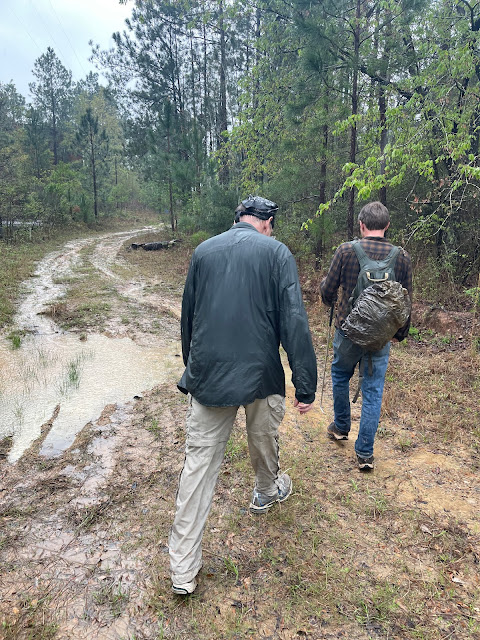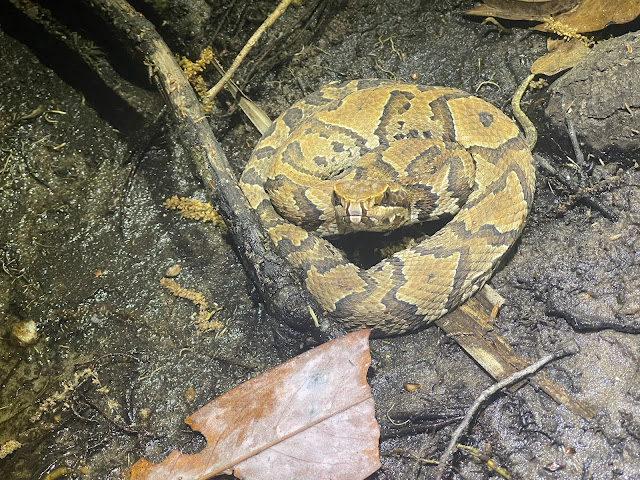The Chicago region has been graced by the presence of a number of natural history-themed educational facilities over the years, mostly in the form of nature centers. I’ve written about the Grove (back in 2014, way before its amazing remodel - something else I need to touch on in the future), and I volunteered at the Peggy Notebaert Nature Museum (both are associated with Robert Kennicott). River Trail Nature Center is another Cook County classic; out by me we like Hickory Knolls for both its indoor exhibits and outdoor hiking. I’ve convinced my daughter that the large, abandoned water tower located atop a wooded kame is actually a monkey cage. We have to look out for wayward monkeys in the woods because they are mischievous as most monkeys tend to be.
Then there was the Wildlife Discovery Center, standing out - far out - from the rest. Located on Lake Forest’s historic Elawa Farm and positioned adjacent to one of the finest oak savannas in the state of Illinois, the facility showcased one of the finest collections of reptiles and amphibians in the region. It was the brainchild of Rob Carmichael, a passionate herpetologist whose vision was to provide an unsurpassed interactive educational experience, free of charge, to visitors from Lake Forest and beyond. For over twenty five years, Rob and his crew have worked extremely hard to build up an impressive collection of animals - mostly reptiles - all the while using them as tools for education and outreach.
In 1996, Rob’s dream of curating a large collection of animals began to take shape. While working with Lake Forest Parks and Recreation, he was given the opportunity to assemble a collection of live animals to use for education. At first, the collection was small, but over the following years the collection would expand to the point where it encompassed numerous rooms within the 1917 gentleman’s farm. The name “Wildlife Discovery Center” worked in the early years but by the 2000s the facility outgrew that title to become a herpetological powerhouse, all the while maintaining a respectable variety of non-reptilian life forms.
Some of the more memorable species on display over the course of the facility’s existence were komodo dragons (the only place in Illinois where one could see them), king cobras, numerous species of rattlesnakes, sailfin lizards, green mambas, eastern indigo snakes, gila monsters, a Fly River turtle, a nineteen-foot albino Burmese python, Aldabra tortoises, hellbenders, tentacled snakes, crocodiles, and more. Favorites included Grug, a water monitor once owned by Nicolas Cage, a bearded dragon once owned by Ryne Sandburg, and Flora, the friendliest rhino iguana you’ll ever meet. An outdoor area featured Boris the bobcat, as well as coyotes, Blanding’s turtles, an arctic fox, and a fine selection of raptors including a large Eurasian eagle owl and a majestic bald eagle. Rob’s obsession with herps and his vast network of connections led to the acquisition of all of these animals and much more. While he was an active member of the IUCN Crocodile Specialist Group, his interest was never limited to just crocodilians. He fell in love with every animal that entered his facility, whether it was a box turtle or a two-fingered sloth.
The Wildlife Discovery Center was in a constant state of evolution. Rob liked to mix things up a bit to enhance the visitor experience. Animals on display one week may not have been on display the next week, and vice versa. Animals on breeding or display loan would come and go, all the while the fan favorites would usually remain in place consistently. Some of the animals at the facility until recently were on display from the very beginning.
In addition to curating a large collection of animals, Rob created and organized a number of fund-raising events. Croctoberfest was a popular event during which he and his team would walk the grounds with some of the "hands-on" animals while visitors viewed several species of crocodilians behind the glass. Proceeds would go to crocodile conservation efforts. Another popular event was Reptile Rampage, the Wildlife Discovery Center’s own version of the Chicago Herpetological Society’s Reptile Fest. Here, visitors paid to view an entire gymnasium full of reptiles and their keepers and enjoy interactive experiences beyond what they might find at Elawa Farm.
In addition to his work with the Wildlife Discovery Center, Rob was a faculty member at his alma mater, College of Lake County. He taught biology and organized week-long field trips to Beaver Island, Michigan. He even created a summer camp for young children, where they too could travel to Beaver Island and study the area’s ecology (but especially herpetology). The Wildlife Discovery Center itself was an accredited biological field station.
When Rob announced his plans to retire, it was sad to hear that Lake Forest was not going to continue on with another curator, instead announcing the closure of the Wildlife Discovery Center. This was a crushing blow to all who have enjoyed the facility for many years but most importantly to the future generations who won’t ever be able to experience the spectacle that was the Wildlife Discovery Center. As Rob assured, there are in fact other great nature centers in the area to patronize. While that is true, NONE come close to the sheer wildness of the Wildlife Discovery Center. It was a true herpetological institution in the Chicago region, and one that hopefully will never be forgotten.








.jpg)
























.jpg)




















